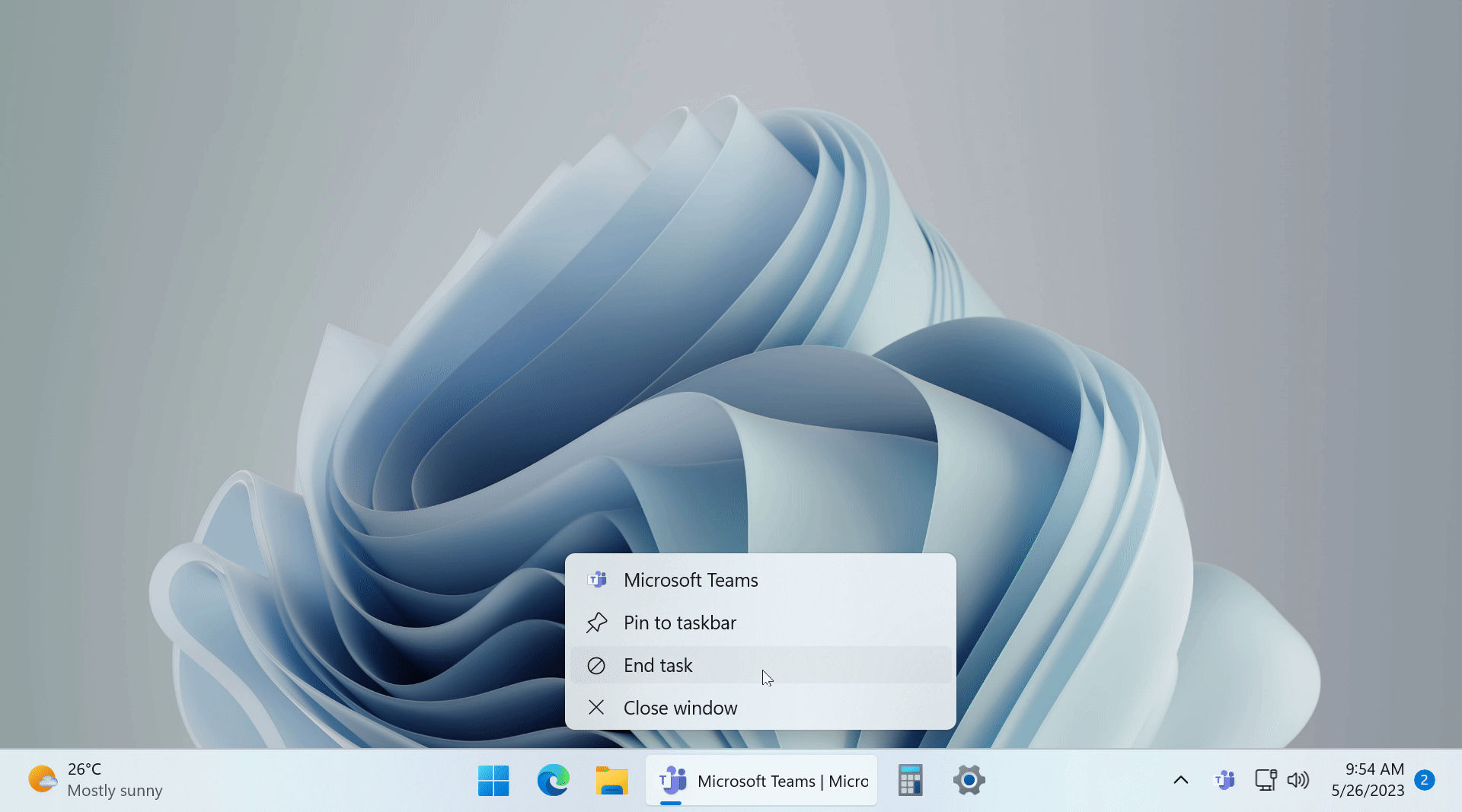Probably every Windows user knows how to close a running app: hit the X button in the upper-right corner or right-click the app's icon on the taskbar and select "Close window." But if a program stops responding, closing it takes more steps as you need to open Task Manager and terminate the misbehaving process. An upcoming feature update will make the process much easier by introducing a new method to close apps in Windows 11. Here is what you need to know about it and how to get it.
End Task and Close window
Windows 11 version 23H2 introduces a new entry to jump lists (context menus that appear on the screen when you right-click an icon on the taskbar) called "End task." It sits next to the "Close window" option, which may look identical at first sight. However, the "End task" feature is different.
Unlike "Close window," "End task" terminates the entire app and its related processes, not just exits one or several windows (this may differ depending on a specific app and its settings). For example, clicking "Close window" on Teams will leave the app running in the background with no open windows, while the "End task" option will shut down all Teams' processes (watch the Teams icon in the notification area disappearing on the GIF below).

Don't worry if that sounds confusing—you will not have to explain two seemingly identical buttons to your grandma. Microsoft says the "End task" feature is primarily intended for developers and thus keeps it disabled by default. Turning it on requires enabling Developer Mode first, which you should be aware of and understand.
How to turn on Windows 11's new "End task" option?
The "End task" option is currently available for testing in Windows 11 preview builds from the Dev Channel (Canary is not supported). You must update to build 23466 or newer, then flick two switches in the Developer section.
- Open the Settings app and navigate to System > For developers.
-
Turn on Developer Mode and confirm the action.

- Switch on the End task toggle. Now you can right-click any running app and terminate it with the corresponding option.
It is worth noting that there is a way to get the "End task" feature without enabling Developer Mode. It involves a third-party app called ViveTool, which Windows insiders often use to discover hidden features and customize various settings.
Caution: Back up important data before using the ViVeTool app. Tinkering with the OS using such programs may result in bugs and instabilities in already unstable Windows builds, so be ready for troubleshooting if something goes wrong. Remember that stable Windows releases are the only way to keep your PC as reliable as possible.
- Download ViVeTool from GitHub and unpack the files in a convenient and easy-to-find folder.
- Press Win + X and select Terminal (Admin).
-
Switch Windows Terminal to the Command Prompt profile with the Ctrl + Shift + 2 shortcut or by clicking the arrow-down button at the top of the window.

- Navigate to the folder containing the ViVeTool files with the CD command. For example, if you have placed ViVeTool in C:\Vive, type CD C:\Vive.
- Type vivetool /enable /id:42592269,42105254 and press Enter (via @thebookisclosed).
- Close Windows Terminal.
- Press Win + R and type regedit.
- Copy the following path and paste it into the Registry Editor's address bar: HKCU\Software\Microsoft\Windows\CurrentVersion
- Open the DeveloperSettings key under CurrentVersion. If the key is missing, right-click CurrentVersion and select New > Key. Rename the key to DeveloperSettings.
- Click Edit > New > DWORD (32-bit) value and rename it to TaskbarEndTask.
- Open the new value and change its value data from 0 to 1.
- Restart your computer.
Now you can terminate running applications by right-clicking them on the taskbar and selecting "End task." To disable the setting, open Registry Editor, navigate to HKCU\Software\Microsoft\Windows\CurrentVersion\DeveloperSettings, and change TaskbarEndTask value data from 1 to 0. You cannot disable the feature in the Settings app (it will be grayed out) without enabling Developer Mode first, so using Registry Editor is a must here.
Do you plan to use Windows 11's new way to close apps? Let us know in the comments.
Bonus: Did you notice that the screenshots above show the taskbar in "never combine" mode with labels? That feature is finally coming soon to Windows 11 later this year. Learn how to enable it in our dedicated guide.
Windows 11 has a new way to close apps and end processes, here is how to enable it
- shwescorpion
-

 1
1



3175x175(CURRENT).thumb.jpg.b05acc060982b36f5891ba728e6d953c.jpg)
Recommended Comments
There are no comments to display.
Join the conversation
You can post now and register later. If you have an account, sign in now to post with your account.
Note: Your post will require moderator approval before it will be visible.